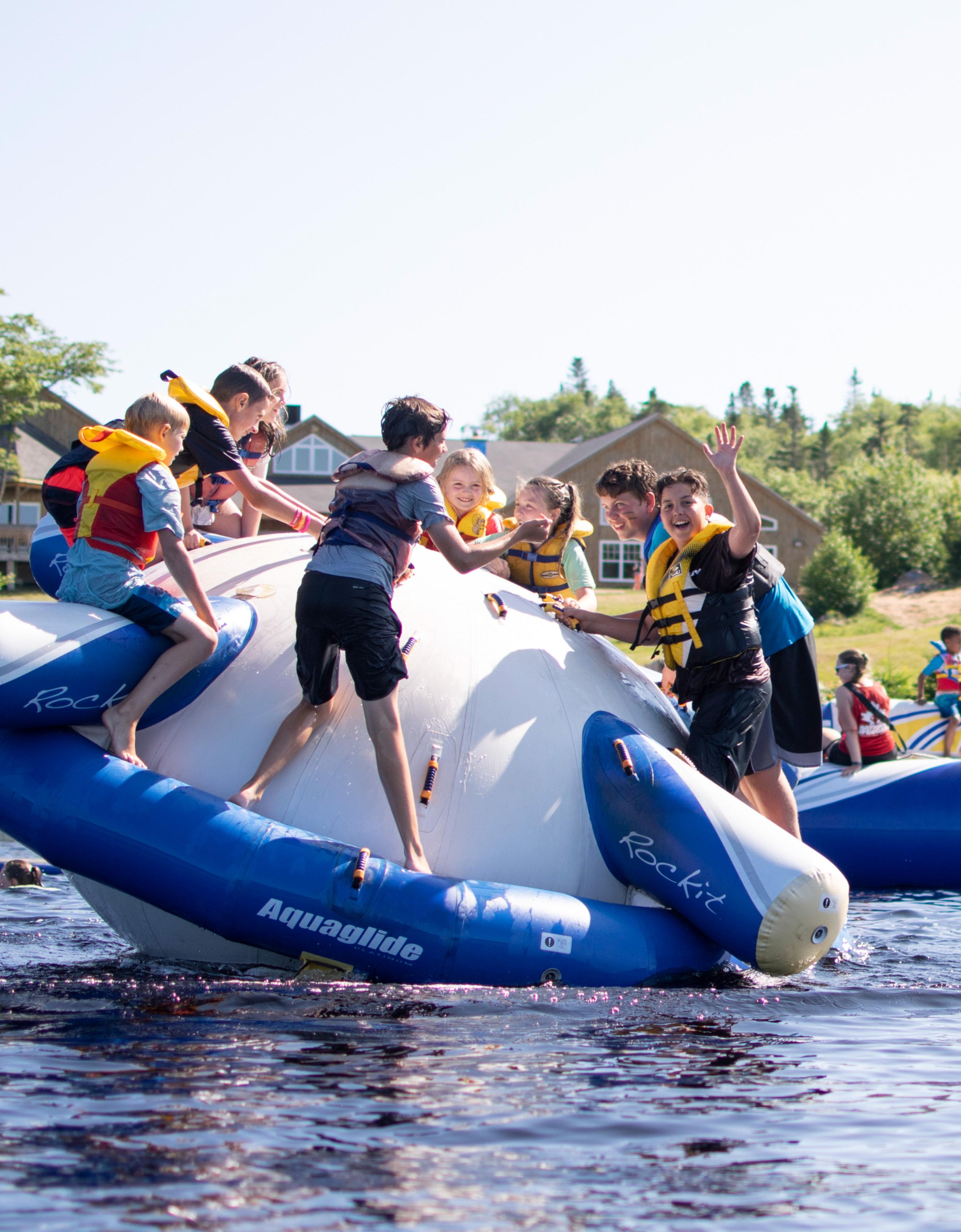Choosing the perfect pet
What to look for when adding a new furry, scaled or feathered family member
Dogs helping kids with autism

Six fun spring celebrations!
Raising young volunteers



What to look for when adding a new furry, scaled or feathered family member
Dogs helping kids with autism

Six fun spring celebrations!
Raising young volunteers















CALLING ALL SMALL-TOMEDIUM-SIZED BUSINESSES ON CANADA’S EAST COAST!













DIVERSITY
ATLANTIC Awards
Is your product or service made right here in Atlantic Canada? Do you celebrate excellence in diversity and inclusion in your Atlantic Canadian workforce? Our new Atlantic Canadian mentorship awards program the Diversity Atlantic Awards, presented by TD and Advocate, will be accepting submissions for businesses made right here beginning in winter 2023.
















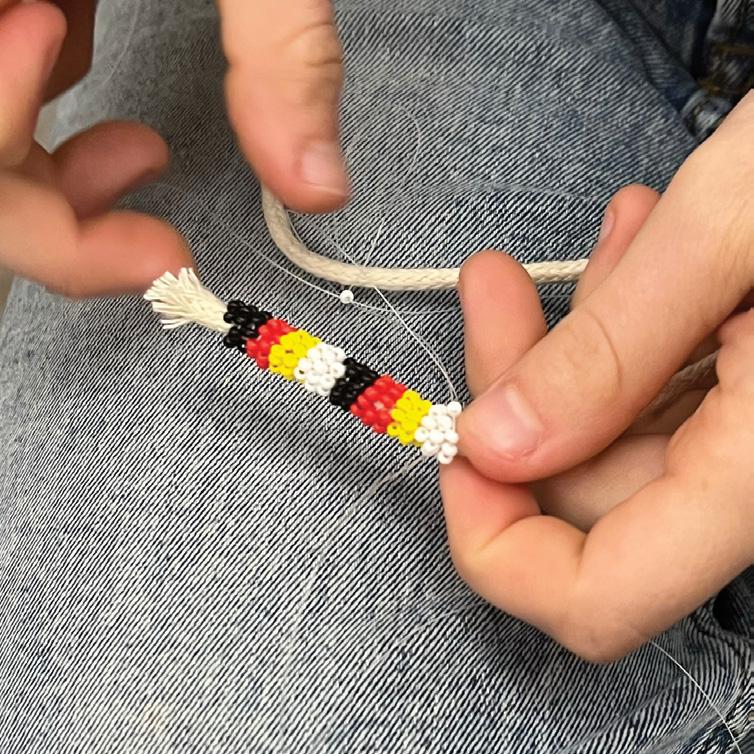


Every One Every Day brings people together to share their ideas, skills and talents that help to make the North End a wonderful place to live for everyone. What is your dream for the neighbourhood? From batch cooking with neighbours, reducing our waste, learning to sew and make, sharing cultural knowledge, or building useful items for your home and the neighbourhood. Come along to share and learn with your North End neighbours—everyone is welcome!
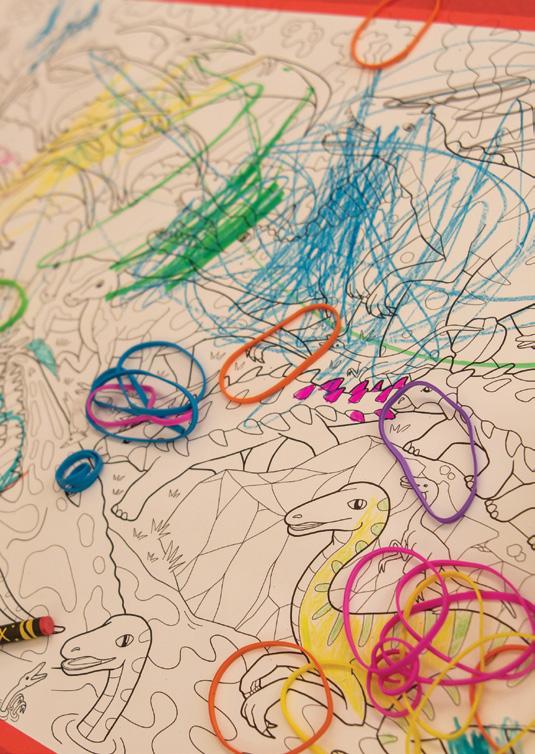
2169 Gottingen St., Kjipuktuk (Halifax)


www.halifaxiseveryone.ca Ge


A project of the Mi’kmaw Native Friendship Centre Bicycle repair, screenprinting, and painting photos by Stoo Metz
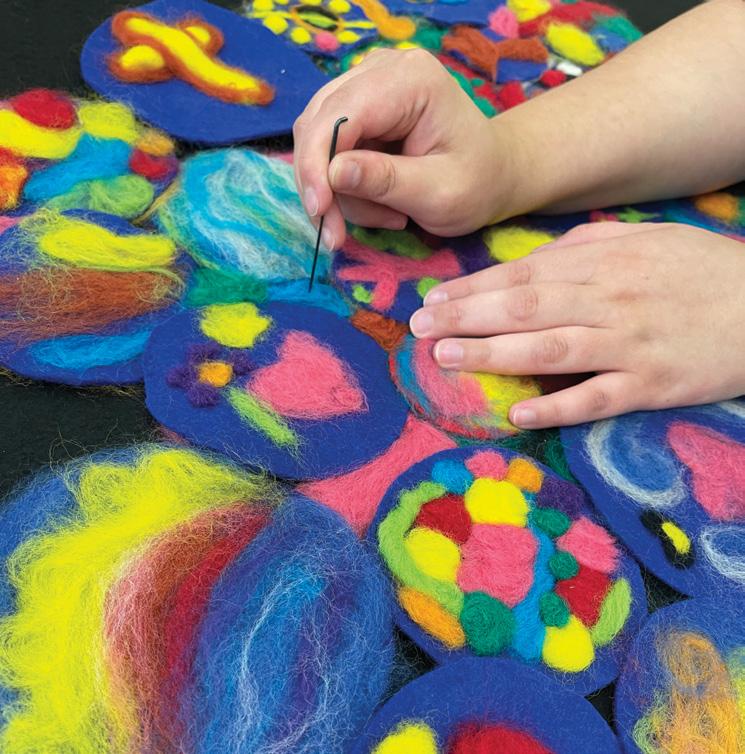

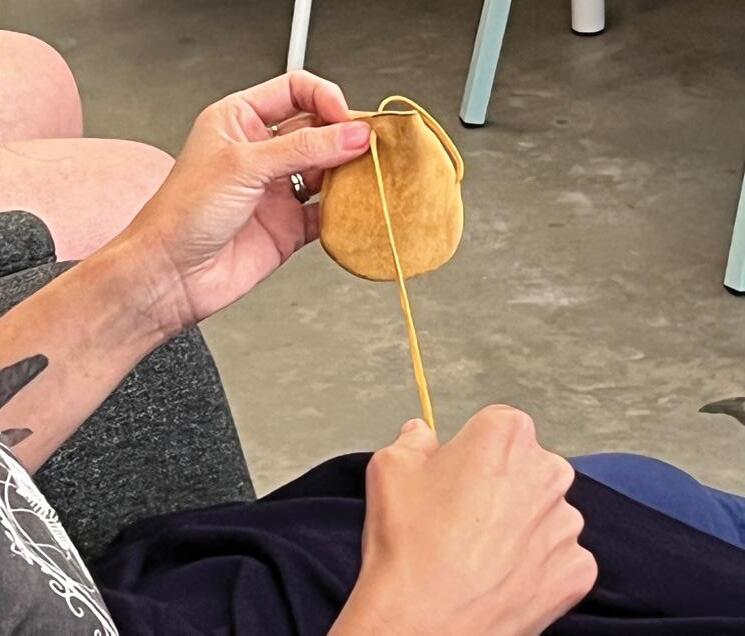
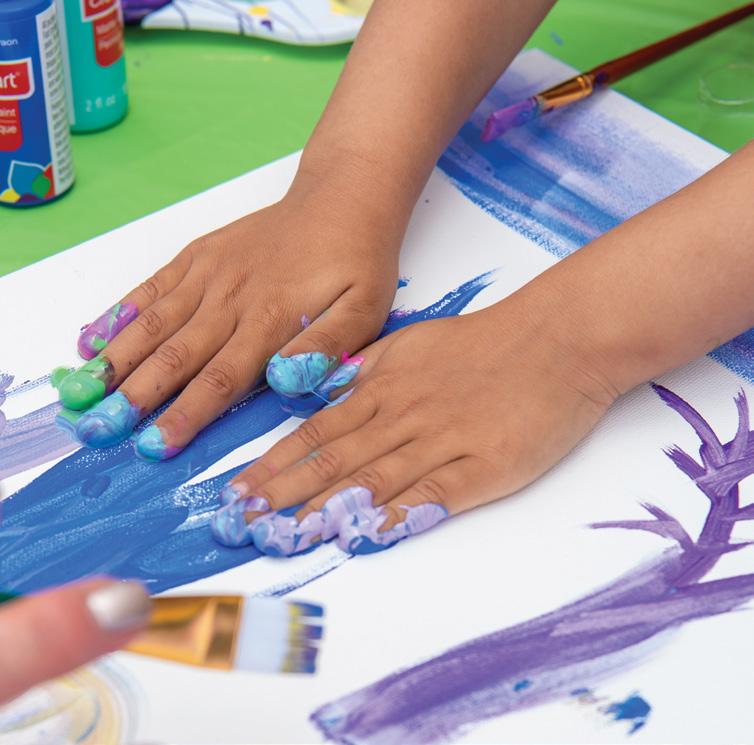

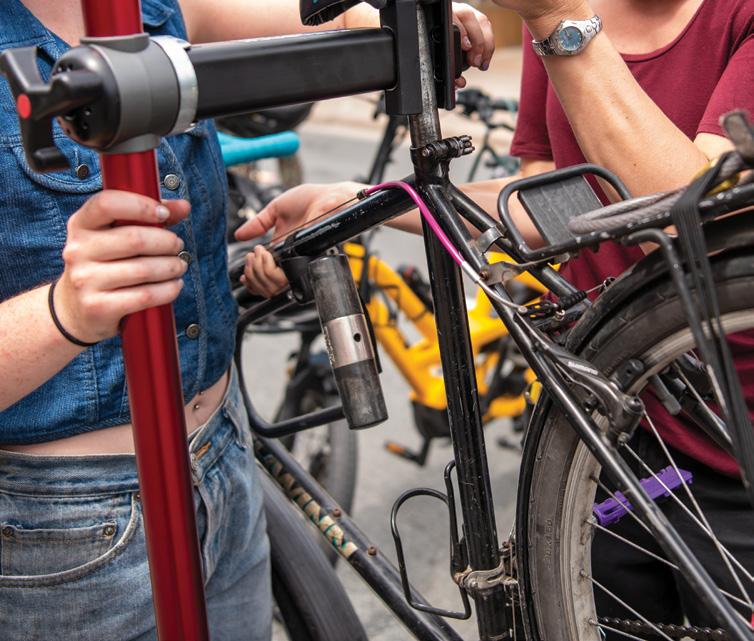 Stop by the Neighbourhood Shop to chat with the team, or check out our newspaper online!
Stop by the Neighbourhood Shop to chat with the team, or check out our newspaper online!

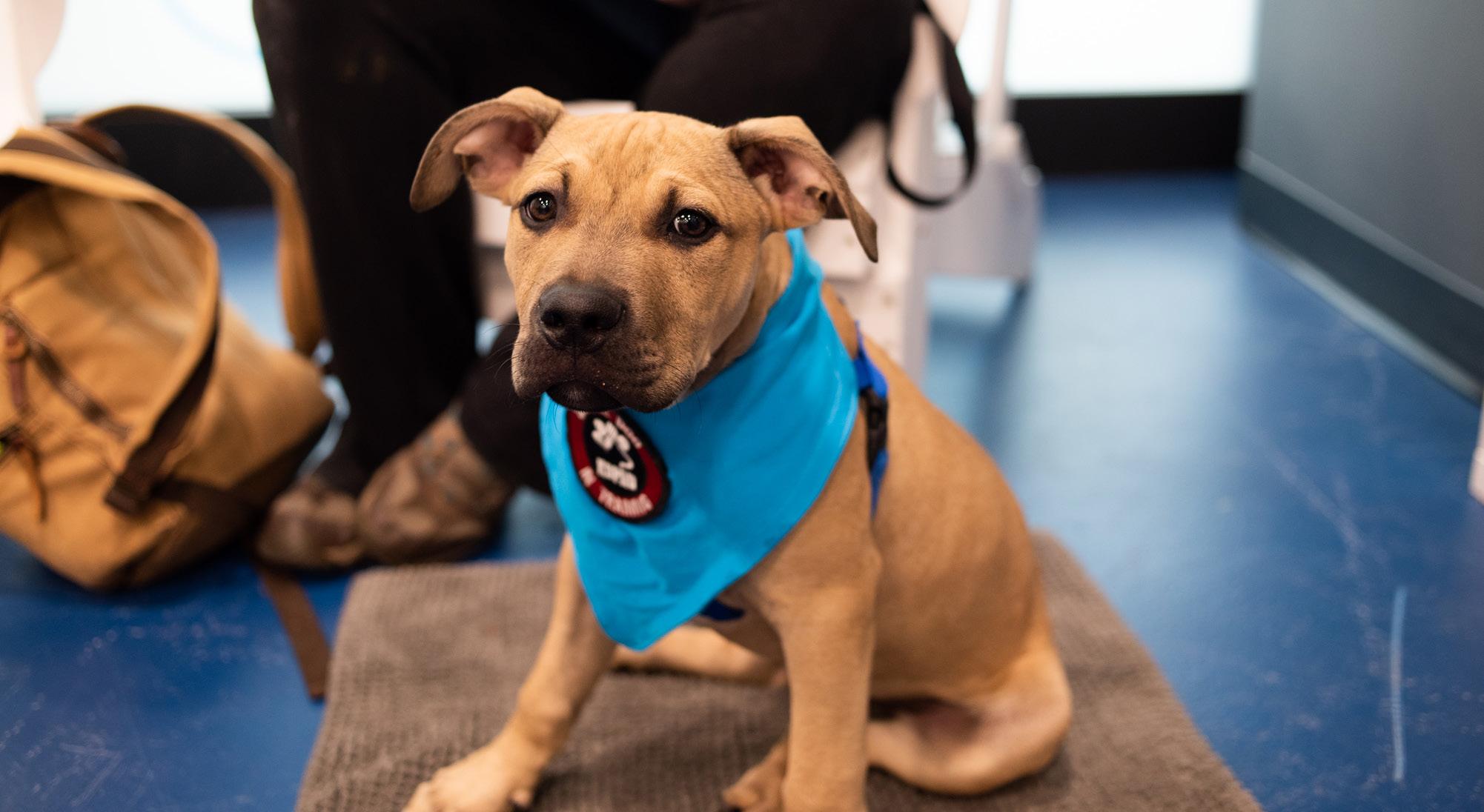
On our cover
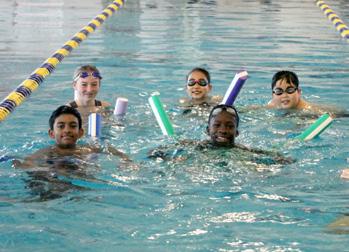
Olivia Stuart, nine, with Willow the puppy. Photo by Bruce Murray/VisionFire
Publisher Fred Fiander
Editor in Chief Crystal Murray
Senior Editors Trevor J. Adams
Lori McKay
Contributing Editors Jodi DeLong
Janet Whitman
Senior Director
Creative Design and Production Shawn Dalton
Designers Roxanna Boers
Andrezza Nascimento
Zoey Zsingor
Production Coordinator Nicole McNeil
Production and Design Assistant Kathleen Hoang
Printing Advocate Printing & Publishing
Contributors


Lindsey Bunin, Karen Kerr, Britanie LeFait, Melanie Mosher, Bruce Murray, Heidi Tattrie Rushton, Janet Whitman

For advertising and editorial enquiries: Tel. 902-420-9943 / Fax 902-429-9058 publishers@metroguide.ca 2882 Gottingen St. Halifax, Nova Scotia B3K 3E2 metroguidepublishing.ca ourchildrenmagazine.ca
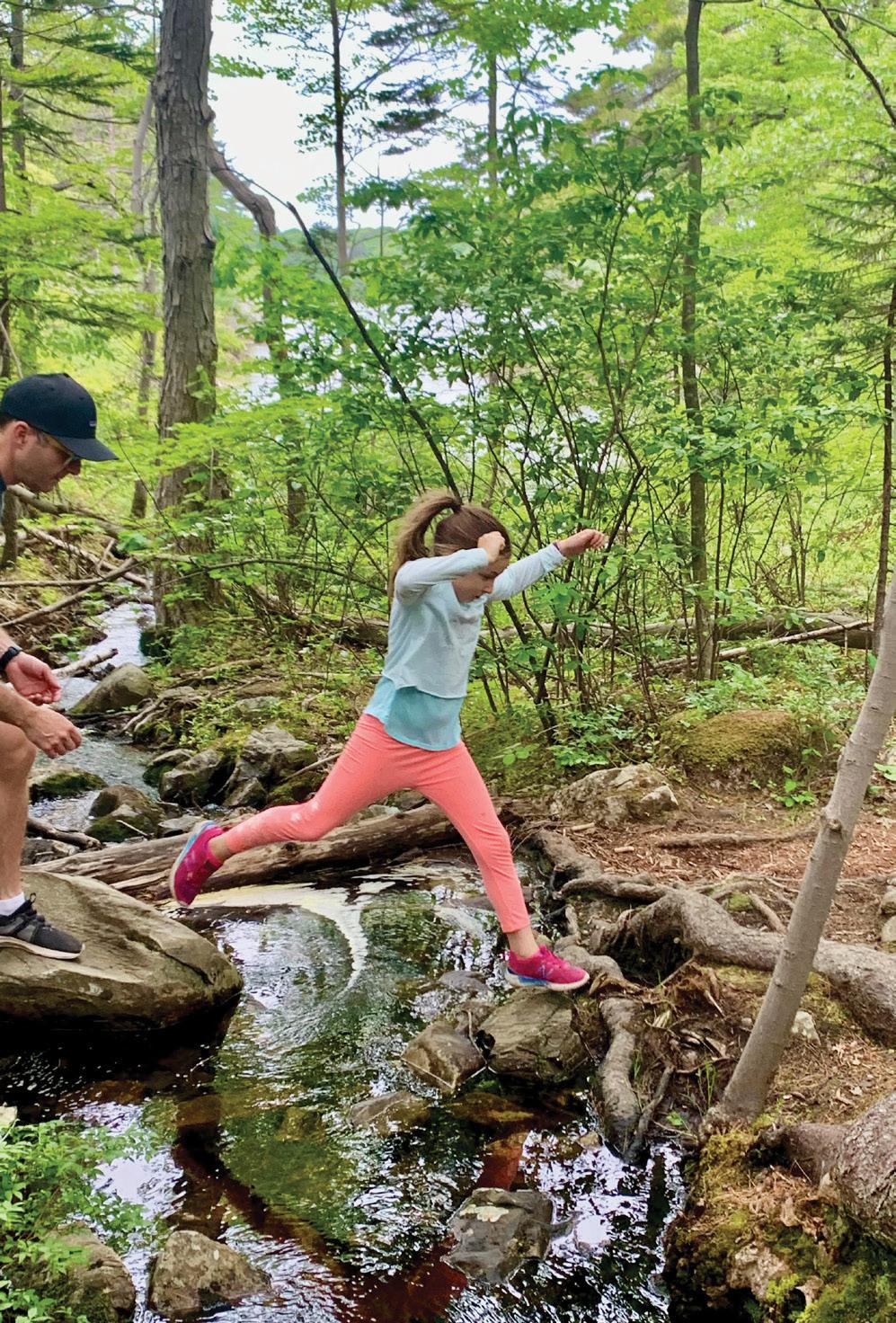


Account Executives
Susan Giffin, Pam Hancock Stephanie Balcom, Connie Cogan
Subscriptions
1-833-600-2870 circulation@metroguide.ca

When my kids were little, they would play dress-up with our cat. He was incredibly tolerant and rarely protested; his claws never came out. We have pictures of him wearing sunglasses and dolls’ clothes, and one of him sitting in a toy highchair with his food dish in front of him and a bored expression on his furry little face. He brought the kids countless hours of entertainment and companionship. They loved him.
Growing up, I wanted a cat more than anything. Every summer we would visit a family friend’s dairy farm. They always had barn cats and usually kittens. I remember searching the hay lofts and eventually we’d find a litter, which I would proceed to play with the rest of day. I desperately wanted to take one home but my mother wasn’t an animal person.
I was allowed pet fish. Fish didn’t shed or scratch the furniture. We set up the tank in my bedroom and I’d fall asleep each night to the low hum of its filter and the bright glow of its florescent light. When the fish would die — which was frequent, even though I took excellent care of them — we would have a funeral around the toilet bowl. There would be tears. But they were my pets, and I was happy to have them.
I finally got my first cat shortly after my husband and I were married. I was working at the Daily News and one afternoon someone heard a mewing from one of the cars in the parking lot. A tiny kitten had crawled into the wheel well of a car and came all the way from Maitland. She was covered in oil, making her look more like a skinny rat than a kitten. She was malnourished and had ear mites. We named her Daily.
Today, my family has two rescue cats and a black Lab. (As it turns out, I’m also a dog person!) Our house often feels like a zoo, especially early in the morning when the cats are playful and chase each other, the dog cries to go for her morning walk and they’re all impatiently awaiting breakfast. But I wouldn’t change a thing. I love that my kids grew up with animals and had the opportunity to learn the responsibilities that go along with pet ownership.
For most animal lovers, there’s no need to describe the reasons for having a pet. The companionship and mental health benefits are obvious. But there's also the other side to consider. Pets are expensive. The food, insurance and unexpected vet bills add up. (The previouslymentioned sunglasses-wearing cat developed diabetes and required daily insulin shots and pricey food.) And do you have time to dedicate to a dog or cat? They miss you when you’re not around, and dogs require daily walks, rain or shine. In this issue, Janet Whitman’s article “Choosing the perfect pet” (page 16), examines the pros and cons of different pet options. We also chatted with families who recently trained service dogs for their kids with autism through K9PAD, a registered Nova Scotia charity (page 18).
This issue also has stories on how kids can volunteer in their communities (page 14), urban homesteading (page 10), the benefits of physio for children (page 21) and fun spring celebrations (page 11), plus a new kids’ fun section with puzzles and activities.
Happy spring!
Lori McKay, Editor
For most animal lovers, there’s no need to describe the reasons for having a pet. The companionship and mental health benefits are obvious. But there's also the other side to consider.



WEEK 1
July 2nd - July 7th
Camp Silly-Yak
Celiac Disease
WEEK 2
July 9th - July 14th
Camp Braveheart
Heart Conditions
Maritime
Adventures Camp
Bleeding Disorders
Camp Trailblazers

Craniofacial Differences
WEEK 3
July 16th - July 21st
Camp JoinTogether
Arthritis
WEEK 4
July 23rd - July 28th
Camp Kedooopse
Family Bereavement
Camp BELIEVE
Parental Mental Illness
WEEK 5
July 30th - August 4th
Camp Whatcha Say
Deaf or Hard of Hearing

Camp Lots-a-Wata
Kidney Disease

WEEK 6
August 6th - August 11th
Camp Carpe Diem
Epilepsy
Camp See-Ya
Blind or Visually Impaired
Camp Brainiac
Neurosurgery Conditions
WEEK 7
August 13th - August 18th
Camp Guts & Glory
IBD, Ostomy, Cecostomy
WEEK 8
August 20th - August 25th
Canadian Cancer Society’s Camp Goodtimes
Living with or Beyond Cancer
WEEK 9
August 27th - September 1st
Camp Treasure Chest
Asthma, Anaphylaxis, Lung Conditions
Giving extraordinary kids a chance to be ordinary
With the cost of living rising, many families are getting creative with how they make ends meet. I recently embraced the concept of urban homesteading. Before researching the term, when I thought of a “homestead,” I envisioned an 1800s farmhouse, a barn filled with animals and acres of crops. (It’s a dream of mine to live on such a property!)
My family moved into our first home in 2020, and the world proceeded to shut down just two months later due to COVID-19. We suddenly had a lot of time on our hands. We watched several YouTube videos on homesteading families, with the children taking a huge roll in their successes. We came across channels showcasing families turning their urban and suburban properties into their own homesteads. I discovered that homesteading is really a state of mind. We had nowhere to go and unlimited time, so we started making changes.
The first thing many families start with is growing food. Even a tiny apartment balcony can produce food. In our backyard, we have a 10-by-16-foot in-ground garden, plus raised beds and containers. Each spring, my children decide what they want to grow in their sections of growing space. My son always picks interesting things like melons, rainbow carrots and pole beans. My daughter loves growing flowers, which helps attract beneficial pollinators. Growing vertically on a trellis is a great way to maximize a small space to produce more.
Preserving food goes hand in hand with growing it. We travel to the Annapolis Valley every June to pick strawberries. Kids love making jam. Washing, cutting, mashing and stirring keeps them engaged

from start to bottling. This tradition provides us with enough homemade jam to last the whole year and pride in producing it ourselves.
Buying vegetables from a farmer in bulk and pickling or freezing them can also cut the amount you are spend through the year with just a little bit of time.
Having backyard chickens has always been a way for families to acquire fresh eggs. It recently becoming legal in all parts of HRM to own up to 10 laying hens and urban hen keeping is growing in popularity. My son dreams of his own chicken coop, which is now possible.
In a society that embraces convenience, skills such as breadmaking and cooking from scratch are uncommon. But after comparing a loaf of homemade bread at approximately $1.50 to the store-bought loaf at $3.50 (or more), you can clearly see the benefit of learning. Plus, following a recipe provides excellent learning opportunities.
Above all else, the homesteader uses what they have or fixes it. If you can replace your own button, it will extend the life of your shirt. If you are handy, you can take the vacuum apart and find the problem and then put it back together. (My seven-year-old did this for me and saved us a ton of money!). Shopping your house before shopping the stores and getting creative with what you have can save time and money.
In our own way, we can all be homesteaders, from the full-scale farmers right down to the one-tomato-plant gardeners. It’s all about mindset and self-sustainability.
Find more eco-mom tips from Britanie LeFait on her Instagram raisinglittlesparks.


 By Melanie Mosher
By Melanie Mosher
Spring is a time of hope. The deep cold of winter is slowly receding and tiny sprigs of green are again showing signs of life. It’s time to celebrate. Here are some fresh ways to mark the serious and not-so-serious days of the season.

A day to celebrate Irish heritage and culture, St. Patrick’s Day has become synonymous with the colour green. Ireland is the Emerald Isle, after all. Why not go green in other ways? Reduce, reuse, recycle. Do some spring cleaning and remember to donate, repurpose or share those unwanted items.
Rather than search for “the luck of the Irish,” spend time with your family and note the luck already around you.

The day when the sun is directly over the equator, providing equal hours of sunlight and darkness. From this point, the days begin to lengthen and the sun starts to spread warmth. Measure how tall the kids have grown in the past year. Or consider their spiritual, emotional or intellectual growth. Spread your own warmth by practising random acts of kindness.
In 1995, American Claudia Evart named Apr. 10 National Siblings Day, after losing her brother and sister at an early age. It’s a day to honour the unique bond between siblings. Why not make it a day of storytelling to celebrate the whole family? Gather to share your funny family memories. What’s your favourite dad joke? How about a game night so you finally get the chance to beat your brother?
Earth Day reminds us of the need to protect and conserve our planet. Make it a time to celebrate the world at large, but also a chance to celebrate your own small world — your family. Plan a meal together, talk about important issues, discuss ways you can make improvements in both worlds.
This has become an annual day to acknowledge the socks left behind. No matter how hard you try, one sock inevitably ends up missing. This is the day to let go of the mate. Discuss the possibilities of how they went missing in the first place.
See who can come up with the craziest idea to use the surviving sock. Sock puppet or sock monkey? Perhaps, you can use them as dusters to help with the spring cleaning.
First celebrated in 1907, this day is recognized around the world to celebrate maternal roles and motherhood in all forms. It’s a time to appreciate your own mother, but can also be a time to “mother” someone else — take your dog for a walk, call a friend or lend your neighbour a hand. It’s also a chance to acknowledge the glory of Mother Earth and Mother Nature and all they provide.









 By Karen Kerr, registered holistic
By Karen Kerr, registered holistic
Foodie” is a trendy term, meaning different things to different people. My definition is simply someone who has an interest in, and is excited about, food. They say “yes” to new dishes, not just sticking with tried and true.
With kids, it can be easy to get stuck on what they will eat. I’m solidly against food waste, but you don’t know if they will like new flavours until they try them. To reduce the chance of them totally rejecting a new meal, tweak a dish they already love. Switch a vegetable or use a different spice. Think little steps. You are building a foundation, not the whole house.
This is a great recipe to encourage foodie-like experimentation. Double the recipe for an easy brunch with friends, or freeze for weekday snacks and lunch boxes.
YOU WILL NEED
1 tsp ghee, coconut oil or unsalted butter (for greasing the pan)
Egg mixture
9 or 10 Eggs
(depending on size)
Sea salt and pepper as needed
Feta, Jack or mozzarella
cheese to top
Chopped baby spinach and yellow/red peppers, ham, bacon or whatever is local and in season
Salsa, hot sauce, avocado, fresh herbs
1. Preheat the oven to 400 F. Grease a 12-cup muffin pan.
2. Combine the eggs, sea salt and black pepper in a highpowered blender or whisk in a bowl for about 30 seconds.
3. Put the veggies/meat in first then pour the egg mixture until it’s about ¾ full. Top with cheese. Eggs will rise.
4. Bake for 15 minutes or until eggs are cooked through (depending on your oven).
Transfer to a wire rack and cool for about five minutes. Run a butter knife around the edge of each cup and pop out the egg bites.
5. If eating right away, you can add salsa, avocado or fresh herbs.
Here are six ways to encourage the burgeoning foodie.
1. Take them to farmers markets and let them ask the vendors questions. It will give them an appreciation of all the hard work they do.
2. Subscribe to a local weekly vegetable box. When it arrives, take three vegetables from the box and ask them to Google or search TikTok for a recipe they’d like to make. You look cool and they get invested in the process!
3. Be open. Are you in a rut making the same meals over and over? Kids learn by modelling.
4. As they get older, give them a day of the month when they get to choose what’s for supper. Encourage them to try something they’ve never had.
5. Get their hands dirty. Let them grow veggies either in a pot or small garden that is all theirs to care for. Learning the time, patience and attention that growing requires gives them insight and respect for the food that sustains us.
6. Ask a local forager if your family can join them on a trek. Learning about common plants in our environment that are edible is fun and educational.
This kind of approach will lead to lots of failures and “Yucks,” but that’s the point. New opportunities present themselves every day. Perhaps kids staying open and curious about food will spill over to friendships, careers and travel.
Take it from this foodie, what I ate today barely resembles what I ate growing up. I’ve added spices and fresh herbs, I use a tagine and juicer, and grow my own sprouts — all things I was not exposed to during my small-town New Brunswick upbringing.
I’ve taken family recipes and revamped them, and I’m still learning every day. Being a foodie has expanded my world and encouraged me to travel it, which is something I want to pass on to my daughter. One day our kids will live on their own and it will be up to them to make the choices on what to eat. I hope the world is their oyster.
Kids are natural helpers. Even at a young age, they will have a range of life experiences that may inspire them to give back to charitable organizations in a personal way. Unfortunately, many non-profits cannot accept official volunteers until they are teens or young adults. Despite that, there are plenty of ways kids of all ages can make a difference and hopefully kickstart a lifelong love of volunteering.
Katherine Thomas, community and corporate giving coordinator at the IWK Foundation, says her organization gets a lot of support from young volunteers. She adds the best way to get kids started is to help them figure out what inspires them in their community.
“Is it a person? A cause? What kind of lasting impact would they like to make? Then have them really reflect on why they’ve chosen that,” she suggests.
Understanding why a cause needs help, and how people will use the money or goods, is a particularly important motivator for children to follow through on with their fundraising or volunteering efforts.
Thomas tells a story about a presentation the IWK Foundation did for a Grade 1 class to help them understand some of the work they do. They brought in tiny diapers used in the neonatal intensive care unit that fit babies who are less than a kilogram, plus the babies’ handprints to compare to the students’ hands. The young students were amazed to learn that a NICU baby’s hand was nine times smaller than their own.
“The impact this had on these Grade 1 students was incredible,” says Thomas. “It really helped them understand who they are helping when they fundraise for the IWK.”
The provincial SPCA is another foundation that often draws the interest of young volunteers. Marni Tuttle, external relations director, says there are plenty of ways for kids to make a difference. It begins by contacting their favourite organizations and asking how they can help.
“At the Nova Scotia SPCA, young people accompanied by a grownup can cuddle the cats and walk the dogs. Older students might be interested in reaching out to offer lawn care during the summer or some help with cleaning,” says Tuttle. “Every year there are interesting opportunities, like joining us for the Pride Parade. Bring your pet and dance along the street with us!”
A few years ago, five-year-old Lily Stewart made and sold bracelets for $2 each for the SPCA and collected donations and goods for the shelter. Over the course of two years, she raised $1,600 for the cause.
The IWK Foundation tells a story of 12-year-old Canon Beazley who became a patient of the IWK two years ago when he was diagnosed with a rare kidney cancer called Wilms tumor. After undergoing extensive treatment and care he was inspired to give back. For the last two years he has held a haunted house fundraiser for the IWK, raising about $30,000.
Nova Scotia has more than 6,400 registered non-profits and more than 410,000 people who volunteer every year, according to provincial government statistics. Teaching children the value of giving back to their community is an important part of creating future adult volunteers.
“Generosity has a domino effect,” says Thomas. “One small act of kindness goes a long way. Inspiring our youth to get involved is key. They can achieve anything they put their mind to.”
* Do a personal walkathon or readathon. Ask friends and family to pledge money to support your challenge.
* Use a birthday for good. Have a themed party and ask for donations instead of gifts, or host a “fiver birthday party” where children bring two $5 bills (the birthday kid keeps $5 and the other $5 gets donated).
* Make something to sell and then donate the proceeds to your favourite cause. Some ideas are homemade keychains or bracelets, painted rocks, knitted hats or scarves, baked goods or lemonade.
* Share your story. Did you have a personal experience with the cause you want to support? Share your story with the organization so they can show others the impact of their work and inspire others to help.
* Adults and kids can team up to run a special event to raise money, such as a pizza day at school, a trivia game at a local restaurant or an outdoor movie night.

* Gather items for a basket and sell raffle tickets. You could buy the items or ask local retailers to donate prizes.
* Do a donation drive. Get a list of the most needed items from an organization and ask your community to donate items on the list.
SUNDAY, APRIL 30, 2023 AT 7PM – ST. ANDREW’S UNITED CHURCH, HALIFAX
SATURDAY, MAY 6, 2023 AT 7PM – FIRST UNITED CHURCH, TRURO
Featuring conductor Gary Ewer, Halifax Circus, and the Nova Scotia Youth Orchestra
What happens when you cross clowns with clarinets? Tightropes with timpani? And rola bolas with violas? Join Halifax Circus and the Nova Scotia Youth Orchestra as they explore an unexpected flurry of music and motion!

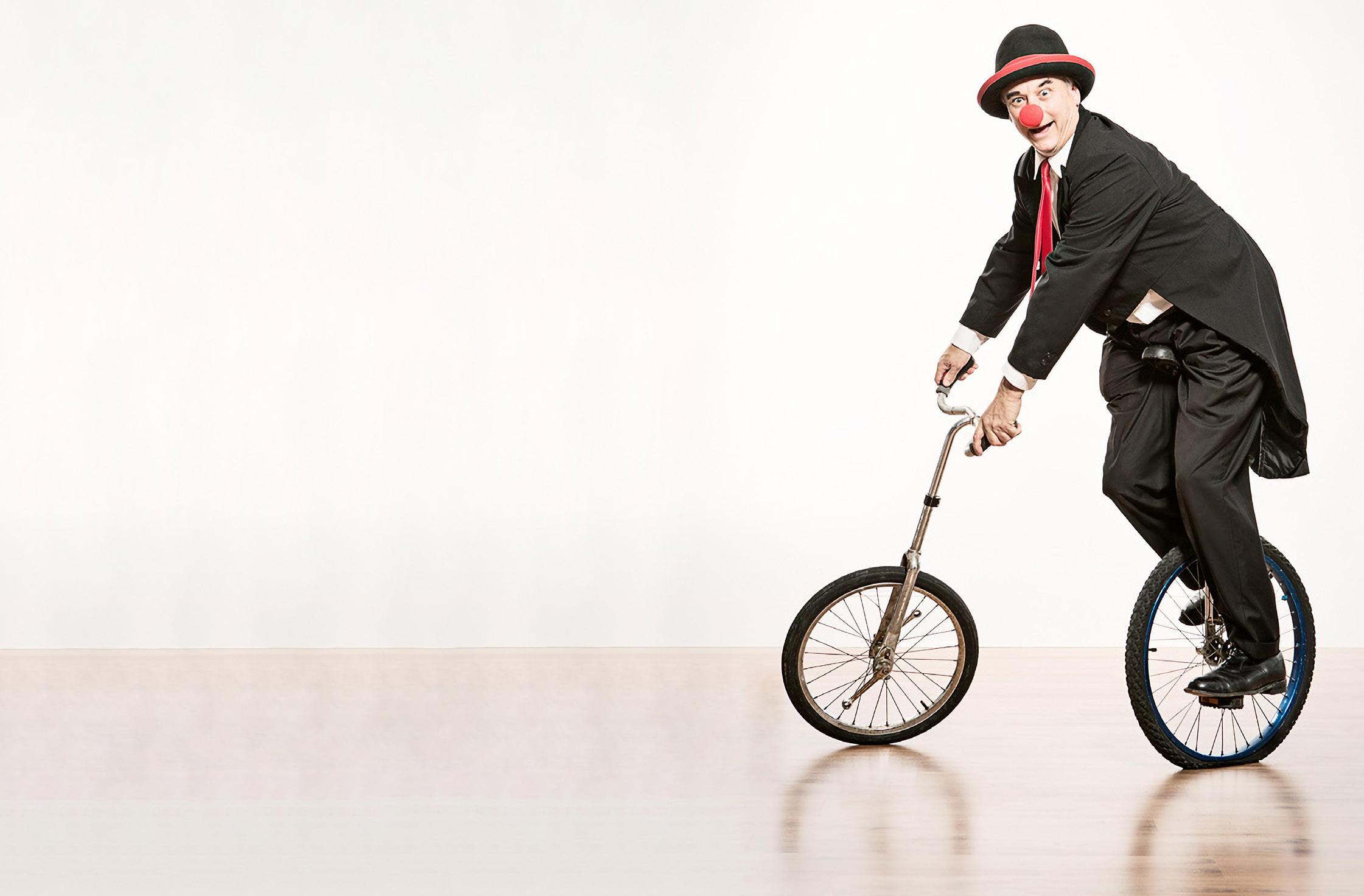
Learn more and get tickets at symphonynovascotia.ca

Thinking of adding a pet to your family? It pays to do some homework.
One of the first things to figure out is what sort of animal is the right fit.
“If your family is constantly on the go or not at home, a dog might not be the best choice,” says Kyla Wuhr, a veterinarian at the Nova Scotia SPCA Veterinary Hospital in Dartmouth. “A caged pet like a rat might be better. It’s important that families understand a pet is a commitment and the pet does have to match your lifestyle.”
Cats are more independent than dogs but probably need more attention than a rat, hedgehog, hamster, guineapig or other “pocket” pet.
“Lots of cats will sleep 20 hours a day, so they don’t depend on their people as much during the day,” says Wuhr. “But
 By Janet Whitman
By Janet Whitman
Want a puppy/dog and not sure what breed is best for your family’s lifestyle?


Take the American Kennel Club’s breed selector quiz akc.org/breed-selector-tool
kitties are social and they do like to have their people around.”
Another consideration is the financial commitment (a dog can cost around $4,000 a year), plus the potential pet’s lifespan.
If you don’t want a long commitment, Wuhr recommends caged pets.
“People get all grossed out when I say rats, but they’re actually really social and they’re friendly little things,” she says. “They only live two to five years so they’re actually a nice little pet for first-time pet people.”
Birds, on the other hand, have many special requirements and can live a long time, she says. “People should know what they’re getting into before getting a bird.”
Finding a veterinarian that can handle their specialized care is also a challenge, she says. “The exotic pets — birds and reptiles — do require much more detailed care.”
Olivia Stuart, nine, with Willow the puppy.61%: Atlantic Canadians who own a pet, compared to 58 per cent in the Prairies and 53 to 54 per cent elsewhere in Canada, according to a national search last year for Pet Valu.
$2,800: Annual cost of caring for a cat, with dental cleaning, pet insurance, food and litter.
58%: Atlantic Canadian pet owners who have multiple pets, compared to 53 per cent in Ontario and 42 per cent in Quebec.
$3,999: Annual cost of caring for a dog in Canada, with food, pet insurance and professional dental care the biggest expenses, according to Statista.
$50: Fee for a mandatory annual licence for a dog in Halifax Regional Municipality, or $15 if spayed or neutered.
$200: Fee for lifetime licence if dog is microchipped, or $75 if spayed or neutered.
If your family has the time, resources and interest, the list of pros of pet ownership is long, from teaching responsibility and helping with learning to building bonds and promoting physical activity.
“There’s tons of evidence on the health benefits of having pets in the household,” says Halifax-based health consultant Mary Jane Hampton.
Studies show that children who grow up with pets have more robust immune systems and better social skills, she adds.
“Younger children in their formative years get opportunities to experience empathy and understand the implications of caring for something else,” says Hampton. “Older kids learn responsibility if there are expectations that everyone in the family has some part in caring for a pet, whether that’s a fish or a Great Dane or anything in between.”
Pet ownership is a family commitment, Hampton adds. “It can’t just be, usually the mom, who ends up picking up the slack when the novelty of the new pet wears off.”
Getting kids involved in the care and nurture “are invaluable life lessons to take through every other kind of social relationship that they’ll have growing up,” she says. “Children who have that exposure early on are much more likely to be set up for success and be able to translate those lessons in pet ownership to other lessons in social relationships.”
Work-from-home mom Tracy Stuart recently added two Goldendoodle puppies to the household.
While Stuart and her husband Jarrett Stuart both had pets growing up, the prospect of owning a dog didn’t become realistic until their two daughters, Brooklyn and Olivia, now ages eight and nine respectively, were in school and the family had a consistent routine after years of travelling.
Getting a puppy is a lot like bringing home a new baby.
“In the first three months, all other things are on the backburner,” says Stuart. “They are around-the-clock care.”
For those working at a full-time job and unable to be home like Stuart, a good support team, such as a family member or friend who can pop by to visit the pup during the day, is a big help.

“Pets bring something different to each member of the household, whether it’s stress relief or joy, play and excitement,” says Stuart. “There are so many benefits, it’s hard to list them all. They’re such a joy to have in the house. They’re always there for you and it’s unconditional.”
Only a few months in with the new puppies, Hazel and Willow, Stuart’s daughters have no doubts.
As soon as the girls start down the stairs in the mornings, their puppies’ tails are wagging and they meet them at the bottom of the stairs with kisses, says Stuart.
“Brooklyn, my youngest daughter, said, ‘They give the best good mornings of anyone ever,’” says Stuart. “Olivia said, ‘Mommy, I can’t even remember life without them.’ They love them to death.”
Service dogs offer many benefits — mobility, companionship, emotional support and increased confidence. And for families with kids with autism, they can also open up a world of new experiences.
During the pandemic, Jenny Tyler’s teenage son Xavier, who has autism, was having a difficult time and struggled with his mental health. The family decided to get a service dog.
They bought a black Lab from a breeder in Ontario. When the dog finally arrived after COVID delays, they quickly realized their partially trained new puppy, Ridge, still needed more coaching.
“His lack of training was affecting Xavier’s bond with the dog,” says Tyler. “Someone in the autism community suggested we reach out to K9PAD.”
K9PAD is a Nova Scotia charity that offers training programs for service dogs for families with various needs, including posttraumatic stress disorder, Ehlers-Danlos syndrome and autism spectrum disorder. It doesn’t charge for service dogs but has a training and equipment fee.
Tyler says Ridge was trained within the year and the family has been working with K9PAD ever since.
“It made a huge difference,” she says. “The biggest thing is that Xavier has started to go out in the community with us as a family again, which is huge.
“Before, we’d have to give him an exact plan of what we were doing. We’d say we were going to the mall and to this store, this store and this store and then home. If we wanted to stop and go somewhere else, even if it was to get a pop or something to eat,
When kids see a cute dog, they often want to run up to it and give it a friendly pat. K9PAD has some recommendations for what kids should do when they see service dogs.
* Give them space
* Don’t touch, talk or stare
* Ignore the team
* Don’t ask invasive, personal questions
it would cause him to run away or melt down. Now, he’ll just sit on the floor and snuggle with Ridge.”
The K9PAD training is done as a family, with a parent as the handler.
“Many children with autism struggle with executive function and daily living skills and they’re not able to always know what they need from their service animal,” says Tyler. “The family is really important in the training side and being that voice.”
Tyler, who worked with Autism Nova Scotia for many years, knew there were other families in the same situation and was happy to recommend the program.
One of those families was Amanda and Chris Richards. They have three children, two boys and a girl: Jayden (11), Ryder (nine) and Bay (five). Both of their sons have autism and Legg-CalvePerthes disease, a rare condition that involves the deterioration of the blood flow to the femur.
“Jayden has had surgery to correct his Perthes disease, and he has a walker on and off, but for the most part he’s just like your typical kid with autism,” says Chris Richards. “Ryder is non-verbal and in a wheelchair.”
They wanted a dog companion for Ryder that would help him be calm and adjust to his environment. The waitlist with some service dog organizations was three years and didn’t guarantee they’d keep the dog if it didn’t pass training.

“One of the biggest things for us was that we wanted to keep the dog,” says Richards. “Anyone who has a child with autism will agree, the number one thing with them is routine. If someone took the dog away, we would be in an even worse situation than before. We wanted the dog to be ours 100 per cent.”
They applied to K9PAD, which approved them in three months. They took home Dublin, their F1B Goldendoodle puppy (the offspring of a purebred Poodle and a Goldendoodle), about 1.5 years ago.
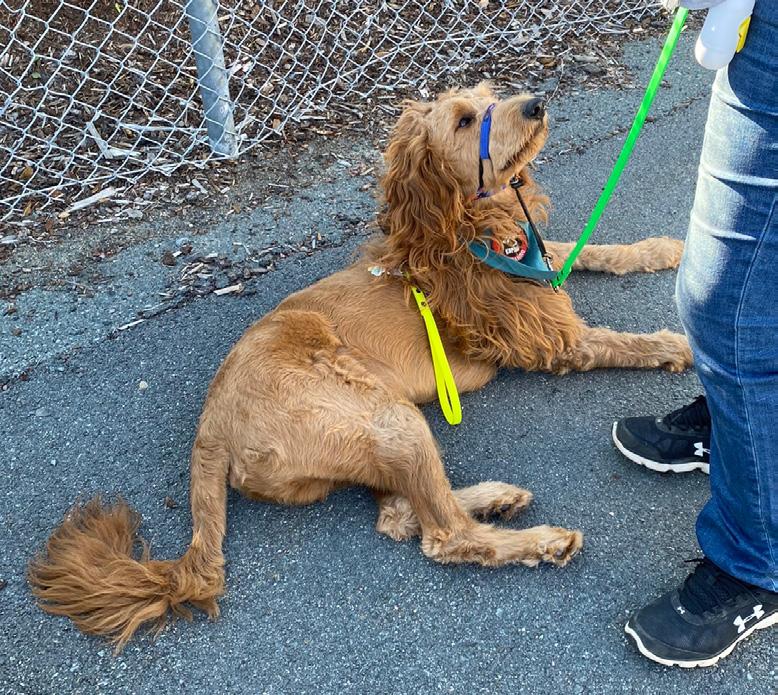
“Dublin slept through the first lesson,” Richards laughs. “He was just eight weeks old. He was just a cute little potato. We didn’t expect much out of him.”
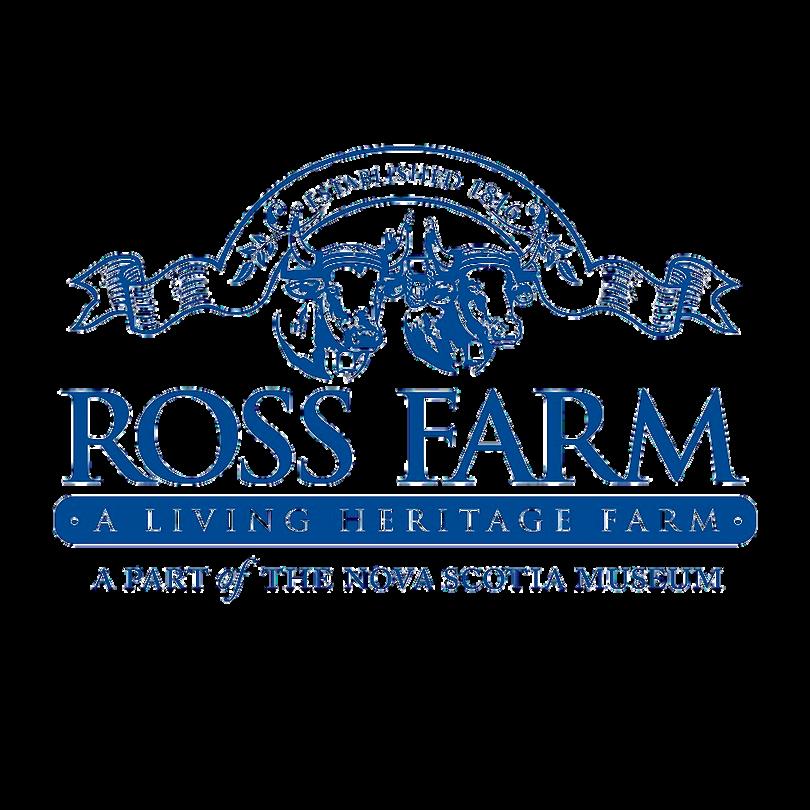
But Dublin caught on quickly. Although only halfway through his training now, he already acts like a fully trained service dog. “He performs tasks he hasn’t even been trained for, just on his intuition,” says Richards, who is now a volunteer member of K9PAD’s board of directors.
It has made a world of difference for Ryder.
“When out in public, Ryder has Dublin beside him at all times,” says mom Amanda. “He wheels and he touches his dog to calm him. But when someone approaches them and tries to interact with Dublin, Ryder becomes agitated.”
Richards stresses the importance of education when it comes to service dogs in public places. “People will come up to us and ask, ‘Can I pet your dog?’ I’ll say, ‘I’m sorry, I’m training him to be a service dog.’”
It’s easy to see the appeal, as the dog is friendly and stands out, given his special haircut.


What is a service dog?
A service dog is trained to do work and perform tasks for a person with a disability. This differs from a therapy dog or emotional support dog.
What types of service dogs does K9PAD train?
K9PAD trains PTSD, EDS (Ehlers-Danlos Syndrome) and autism service dogs.
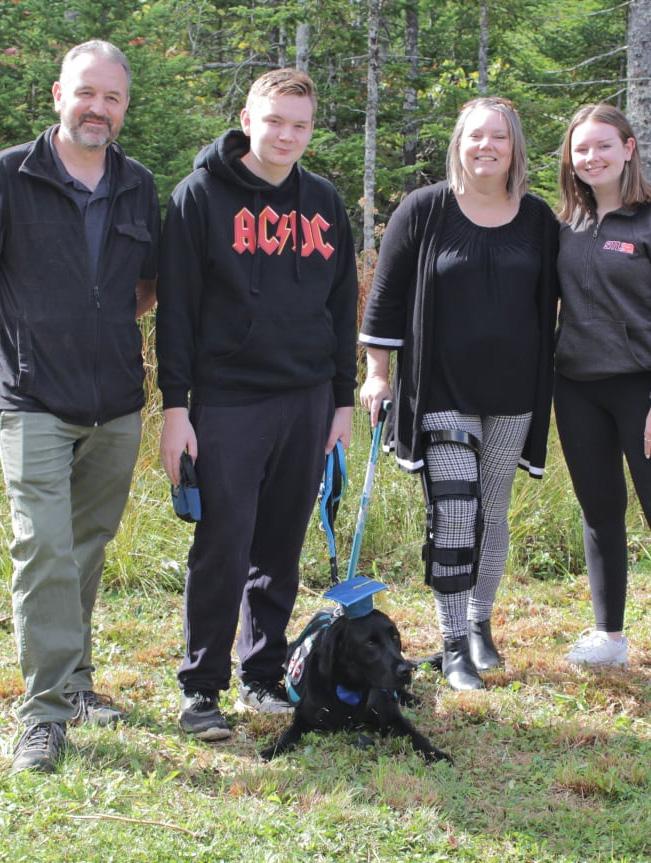

How should I interact with a service dog?
Just ignore them! Service dogs are classified as medical equipment for their handler. Petting them, talking or staring can distract them from doing their job.
Provided by K9PAD

K9PAD trains regularly at Decathlon in Dartmouth. The store’s 1,700-square-foot sports facility, the Decadium, is available for community groups to use for free. In addition to service dog training, the space frequently hosts groups like the Wild Child Forest School, learn-to-climb sessions (for kids over eight), archery and vision-loss rehab groups.
“When I first brought this project (with K9PAD) to the other activity leaders, my store leader was 100 per cent on board,” says Haley MacPhee, activities leader at Decathlon. “This training has everything to do with sport because if dogs and their handlers are uncomfortable in sporting environments, how can they access sport? Our goal is to make sports accessible to the many.”
“One of the things with Ryder’s autism is that he’s really big into sensory and loves textures,” says Richards. “Knowing this, we shaved Dublin to look like a lion, which Ryder loves. He has this big mane, about six inches long, and a tuft at the end of his tail. Ryder loves the feel of his hair… It’s really helped Ryder bond to the dog.”
Ridge the service dog with his family.Bedford South is a growing community, including a hub of businesses to meet the needs of its residents. One of the first businesses to open in the area over a decade ago, Southgate Dentistry, has recently experienced some growth of its own.


“We needed more space to accommodate our growing patient family,” says Dr. Paula MacPherson, owner/dentist and mother of four. “I also had the unique opportunity to have my cousin join the practice.”
The new location on Hogan Court has been the perfect transition for the team at Southgate. It’s bright, beautiful and warm; the ideal setting for the friendly professionals who work there.
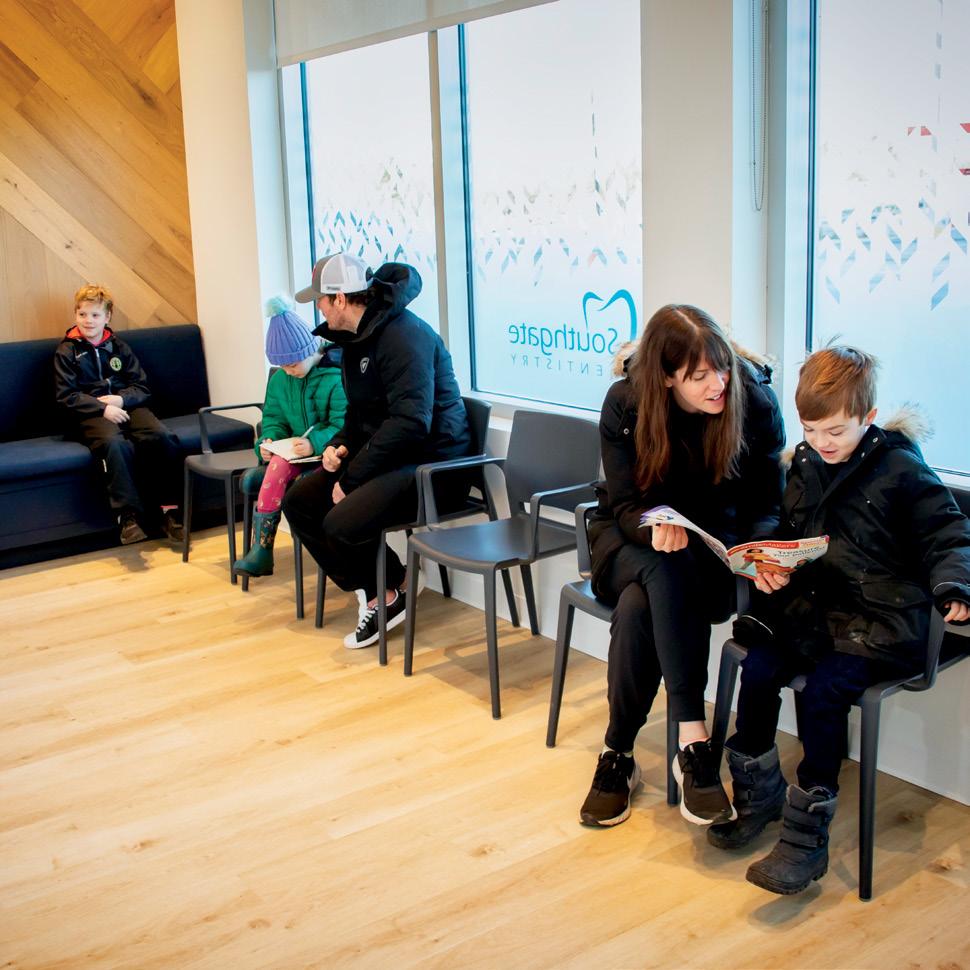
Dr. Jacquelyn Scott has recently joined the practice, providing additional opportunity for patients to meet their dental care needs. Mother of two young children, she also lives in West Bedford.
For MacPherson and Scott, dentistry is a family matter. MacPherson’s lineage includes a list of local dentists. Her grandfather (Dinny Morrison) practiced in

Nova Scotia from 1956 to 1990, her father (Archie Morrison) is an oral surgeon, and two of MacPherson’s sisters (Trish Brady and Teresa Burns) are also dentists practising in Halifax. Scott is a maternal cousin. The group is ready to look after your family, including its youngest members.
“We are a very family friendly practice and see lots of young kids,” says MacPherson. “Children should have their first dental visit at age one.”
“It’s important to introduce proper oral health care at an early age,” adds Scott. “Decay in baby teeth can lead to pain, infection, tooth loss and can damage future permanent teeth. Getting your child comfortable with the dentist at a young age is the best way to prevent disease and dental phobias.’’
Some parents may be surprised to learn how excited their kids are to come to the dentist. As mothers themselves, Dr. MacPherson and Dr. Scott, along with their team, are well equipped to handle all of their little patients with care and compassion. And that’s something to smile about. •
 Dr. Paula MacPherson and Dr. Jacquelyn Scott
Dr. Paula MacPherson and Dr. Jacquelyn Scott
Jessica Osborn’s six-year-old daughter, Elodie, has cerebral palsy left-sided hemiplegia, due to a brain hemorrhage when she was born 14 weeks prematurely.
“Having a child with a physical disability leaves you feeling strongly that you don’t want any further hindrance to them being able to accomplish physical challenges,” says Osborn. “She’s an extremely active kid, but her leg muscles have increased tone and subsequently she struggles with balance and strength. Thankfully, she’s wdetermined, and nothing stands in her way.”
A tailored physiotherapy approach has helped Elodie improve her mobility.
“For a kid like Elodie, physio will always play an important role in ensuring that we help her body to develop as well as it possibly can,” says Osborn.
When Elodie started treatments while living in Victoria, B.C. two years ago at age four, she was unable to walk across a balance beam unsupported and could not balance on her left leg at all. Physio made a big difference and they wanted to continue treatments when they recently moved to Nova Scotia. Elodie started going to the new Kids Physio practice in Bayers Lake.
“Elodie loves it,” says Osborn. “She’s so excited on the days when we have a session. She has an absolute blast even though she’s physically working very hard.”
The interior of Kids Physio looks more like an indoor playground and less like a clinical setting, which is exactly what owner Samantha Dawe wants children to see when they enter.
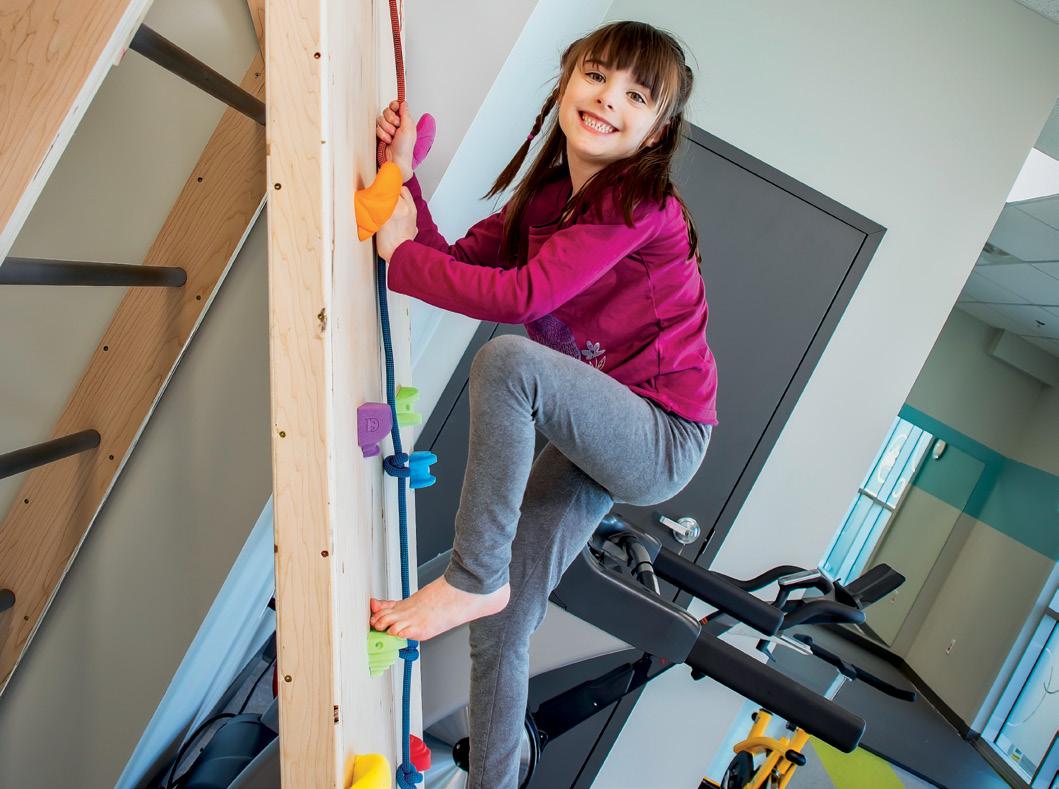
“It’s a super open space with tons of toys and equipment that caters and appeals to all ages, like a slide, swings and monkey bars,” says Dawe. “We use hands-on manual therapy. It’s exercise cleverly designed as forms of play.”
The clinic opened last May and works with patients from birth to 18 years.
“We work with babies who might not be meeting their common physical milestones, like rolling, sitting, walking,” says Dawe. “The sooner we can start treatment, the better.”

Toddlers are often referred to physiotherapy for toeing in or out, or W sitting. Older, school-aged kids are more frequently coming in with developmental coordination disorder.
“Formerly, kids would be labelled as being awkward or clumsy,” says Dawe. “But it’s becoming more formally diagnosed and can present as challenges with handwriting, brushing teeth, tying shoes, learning to ride a bike, things like that.”
The oldest kids they see, in their late teens, most often need support with sports injuries.
Elodie Osborn, six, has cerebral palsy left-sided hemiplegia. She’s extremely active and going to physio regularly has made a huge difference in her mobility.
PHOTO: BRUCE MURRAY/VISIONFIREPromising “a celebration of breakfast and family in 52 essential recipes,” food writer and Chatelaine contributor Mark Pupo combines memoir and cookbook, aiming to inspire people to come together and celebrate each other with a weekly meal. He draws on his experiences creating Sunday morning feasts with his neurodivergent kindergartener, starting with simpler challenges and exploring the surprising origins of breakfast staples. The recipes are sure to delight young palates, with offerings like Green Eggs & Ham, Mini Monkey Bread, and a homemade take on the ever-popular Pop-Tarts.

 By Susan Vande Griek
Art by Emma Fitzgerald Nimbus Publishing
By Susan Vande Griek
Art by Emma Fitzgerald Nimbus Publishing
Ages 4 to 8
Drawing inspiration from the classic Gaelic ballad “Twa Corbies,” author Susan Vande Griek creates a read-aloud counting primer. Readers join a country dweller and a friendly dog for a ramble through the woods as the crows squabble and caw. Stanzas like “Caws barked out / Travel here and there / Bringing in others / Pair by pair” are haunting and evocative, capturing the melodious beauty of the original tune while remaining accessible to new readers. Accompanying the tale, Emma Fitzgerald’s brooding art perfectly captures the stark beauty of the late autumn woods.
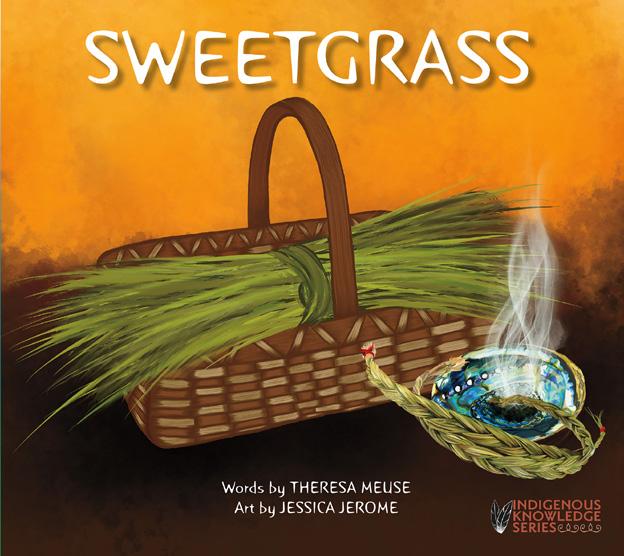 By Theresa Meuse
Art by Jessica Jerome Nimbus Publishing
By Theresa Meuse
Art by Jessica Jerome Nimbus Publishing
Ages 4 to 8
The latest installment in Nimbus Publishing’s Indigenous Knowledge Series takes readers to early July, as Matthew and Auntie take cousin Warren on his first trip to the coast to harvest sweetgrass, which is precious in Mi’kmaw culture. Through traditional teachings, readers learn its importance as traditional medicine, a sacred offering and a smudging ingredient, along with a key lesson about the importance of not picking more than he needs. Two-spirit artist Jessica Jerome brings a unique perspective and a distinctive visual style to the story.
Ages 8 to 12
In Vivien Gorham’s Spirit of Summerwood, protagonist visits the eponymous camp, the 12-year-old’s favourite place on earth, where she’ll find with her best friend, her mentor and her beloved equine. Yet this year, there are many unsettling changes — most alarmingly, a ghostly boy that only she can see. Fans of Gorham’s earlier work will be delighted with this standalone book, an ideal intro for new “big book” readers.

